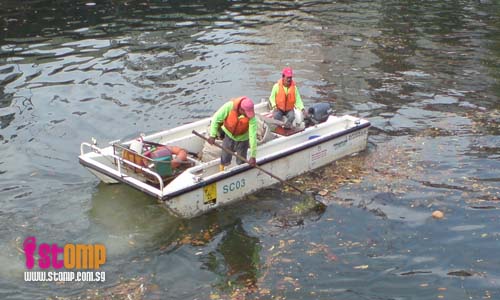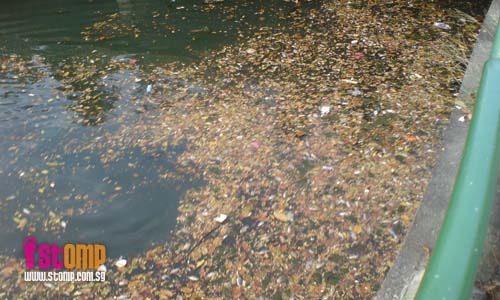
A STOMPer was told her sister had noticed a foul odour while waiting for a bus in front of Block 161 Toa Payoh near the flyover. She soon discovered a nearby waterway was full of dead fish.
Here's what she had to say:
"I took these pictures today (Jan 29) at about 9.30 am.
"While waiting for a bus my sister had noticed a rotting stench. For a moment she had thought there might have been a dead body nearby!
"She looked into the nearby waterway and discovered workers clearing the area of dead fish.
"A worker nearby told me that the the problem was happening all along the waterways in the area, from Thomson to Towner Road, and even all the way to the Geylang area.
"It seems all of the fish that are dying are also of the same species.
"I wonder what the source of the pollution is. There appears to have been construction nearby, maybe that's the cause of the problem."




So much for the Public Utilities Board (PUB) and its ABC Waters Programme...
The fish involved appear to be tilapia (Oreochromis spp.), of which 3 species are known to occur locally; these are the blue tilapia (Oreochromis aureus), Mozambique tilapia (Oreochromis mossambicus) and Nile tilapia (Oreochromis niloticus). These species are also known to hybridise with one another, both in captivity and in the wild. In fact, the popular red tilapia that is bred on fish farms throughout the region is a hybrid between the Nile tilapia and Mozambique tilapia. Originally native to much of Africa, and parts of the Middle East, various species of tilapia have been introduced for aquaculture and fisheries throughout the tropics, and have established populations in every continent except Antarctica.
Ordinarily, these fish are extremely hardy, able to survive in our urban waterways. They thrive even in concretised monsoon drains and canals, habitats which present very harsh living conditions that most of our local fish cannot cope with. However, there are occasions when entire shoals of tilapia suddenly die en masse, which is a cause for concern, since these incidents may indicate that the cleanliness of our waters has been compromised.
The cause of this particular mass death could be due to various reasons. I think it is likely that for one reason or another, the waters underwent hypoxia, killing the fish. As to what triggered the depletion of dissolved oxygen, one can only guess. Possible causes include hot weather, or eutrophication due to an overabundance of algae or phytoplankton. There might be pollution, which would be quite serious if it is capable of killing tilapia in large numbers. Finally, it is possible that there is a virulent disease or deadly parasite sweeping through the tilapia population in the area. Without any actual analysis of the water, it is difficult to extrapolate further.
What worries me is that the area affected is situated relatively close to our Central Catchment Area. Also, it is drained by the Kallang River, which flows into the newly-completed Marina Reservoir. If pollution is the cause of this die-off, it does have serious implications for the management of our water supply. At this point, the former mouth of the Singapore River is still undergoing the transition from brackish water to freshwater, but in future, if pollution occurs upstream, it could contaminate the entire reservoir. It is essential to bear in mind that any form of pollution occurring at any point along the Kallang River and Singapore River could affect the entire reservoir.
I think the most likely scenario was that this die-off was more due to natural causes, a spell of hot weather and consequently low dissolved oxygen content making the waters temporarily inhospitable to aquatic life. Even so, the importance of safeguarding the health and cleanliness of our watersheds simply cannot be overstated.
Update: Mystery over dead fish in canal (30th January 2009) (Mirror)
Related post: Why so many dead fish in Rochor River? (10th February 2009)